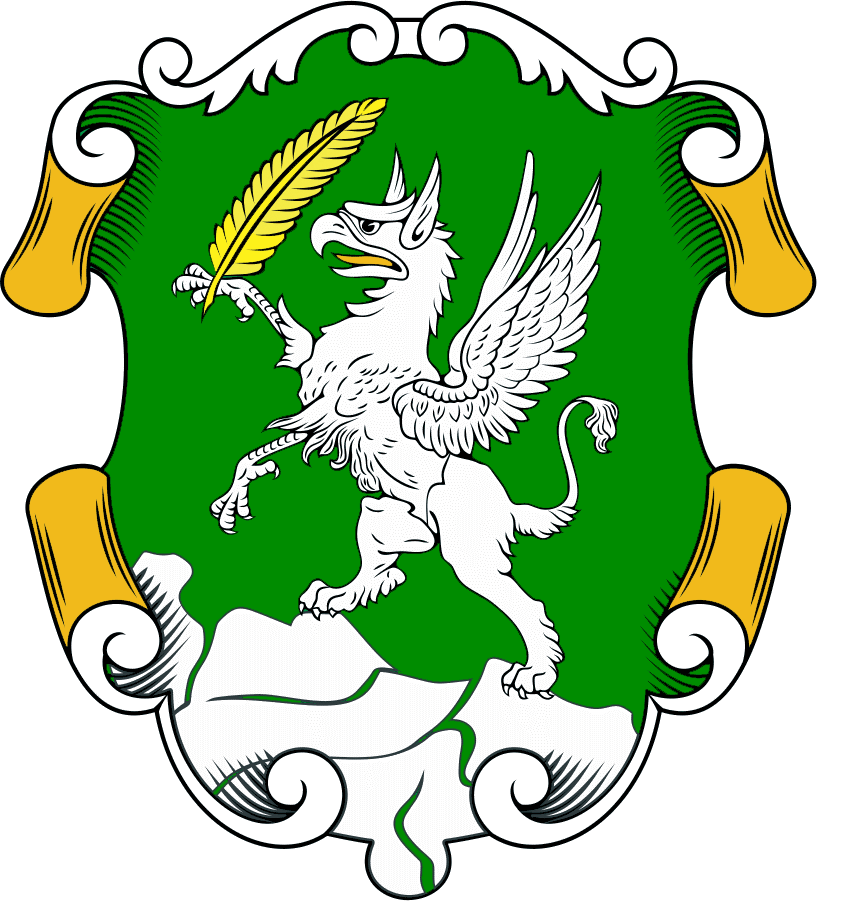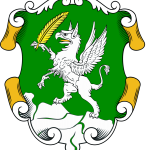The site of Tumba Madžari, situated in the present day suburb of Čento, represents the most important Neolithic settlement in the Skopje Valley. It was discovered in 1961/2 during archaeological prospecting. The first archaeological explorations were carried out in 1978 by the Museum of Macedonia. The results revealed that this is a Neolithic settlement, with three phases during which it was settled. The stratigraphy of the settlement has a cultural stratum 2.40 m thick, and the pits are 2.80 m deep.
View other Archaeological sites of the Republic of Macedonia in a larger map
This settlement reached its economic and cultural peak in the period between 5800 -5200 BC, i.e., during the phase Amzabegovo-Vršnik II -IV. The explorations carried out in 1981 revealed the first structure identified as a shrine. Thus far, seven more such structures have been unearthed. The house that was discovered first was built in the traditional technique, with poles stuck into the ground, often flanked with stones/millstones. The patching shows that big hewn logs, whose imprints/traces are still visible, were built into the walls. On the outside, the walls were decorated with fingerprints in the shape of spirals terminating as primitive volutes.


The house covers an area of 8 x 8 m and has a regular square form. The roof is double-pitched, made of straw and mounted on a wooden structure supported by thick poles on the outside, which stand on the front and west sides. The house interior is partitioned by a thin, irregular parapet. It separates two furnaces built next to it. For the first time in Macedonia, one small and two large painted amphorae have been discovered on a single site; their shape, texture and decoration with stylized floral elements were made by the hand of a highly gifted craftsman. A total of forty five fully preserved vessels and numerous fragments have been discovered in this shrine/house. They include various pots, pythoses with barbotine ornaments, large frutaria with protruding ribs on the inside of the rim, plates, a small pyxis with plastic pintadera-like relief on the bottom and various small vessels. The askoses with their simple, but perfect form are especially characteristic of Tumba Madžari. Decorated with feather like barbotine, with four handles on the belly and one on the back, they resemble water birds. In 2002, an earthen ‘bath tub’ was discovered as well, with finely smoothed walls and floor, and on it, salt crystals.
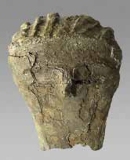
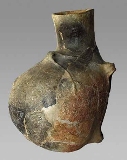

The terracotta figure of the Great Mother is the hallmark of the site of Tumba Madžari and this house. Its impressive dimensions (0.39 cm in height), the classical composed posture of the female figure rising above the house, watching over the house’s hearth and tranquillity, makes this terracotta figure an exclusive artefact. Later research revealed other fragments of cylinders and a house with different dimensions and different hairstyles of the female figures. In general, the hairstyles speak of the exceptionally varied hairstyle fashion among the Neolithic women.
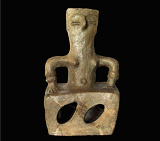
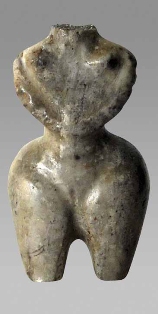
Of special interest is an impressively sculpted man’s head in natural dimensions. On the site of Tumba Madžari, specimens of anthropomorphic plastic art are numerous and greatly varied. A random find from this site is a ceramic head of a ram (bull), a bucranion, dated to the early Neolithic period. Other exceptional zoomorphic depictions include a goat and a centaur with receptacles on their backs. The tools discovered in Tumba Madžari include weights for a vertical loom, bi-conical weights (reels) for fishing nets, numerous bone spatulas standard in shape, awls/ bradawls and needles. Flint artifacts include small flint knives, cutters, stone mortars and millstones. The analysis of animal and bird bones from this site indicates that the Neolithic man provided his meat exclusively from his livestock, and very rarely by hunting and fishing.
Bibiliography:
Sanev V., Neolitsko svetiliste od Tumba vo Madzari, Skopsko, Maced. acta archaeol. 9, Skopje 1988, 9-30.
Moskalewska A., Sanev V., Preliminary analysis of bone remnants of animals from the Neolithic Archaeological site Tumba Madzari near Skopje, Maced. acta archaeol. 10, Skopje 1989, 55-75.
Sanev V., Tumba Madzari, Arheoloska karta 2, Skopje 1996, 377-378.
Zdravkovski D., Tumba Madzari, Archaeological sites, Cultural heritage protection office, Skopje 2009, 12-15.
